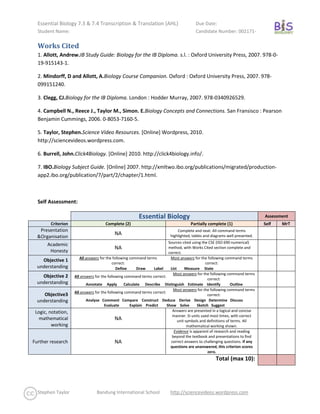7 Ways to Set Healthy Boundaries with Worksheets

Establishing Healthy Boundaries for a More Balanced Life
Setting healthy boundaries is an essential part of maintaining a balanced and fulfilling life. When we set clear boundaries, we communicate our needs and limits to others, allowing us to protect our time, energy, and emotional well-being. In this article, we will explore the importance of setting healthy boundaries and provide you with 7 practical ways to establish and maintain them, along with helpful worksheets to guide you through the process.
Why Setting Healthy Boundaries is Important
Setting healthy boundaries is crucial for several reasons:
- Protects your time and energy: By setting clear boundaries, you can prioritize your tasks and activities, ensuring that you have enough time and energy for the things that matter most to you.
- Maintains healthy relationships: Healthy boundaries help you communicate your needs and expectations to others, promoting mutual respect and understanding in your relationships.
- Reduces stress and anxiety: When you set clear boundaries, you can avoid overcommitting and taking on too much, reducing stress and anxiety.
- Boosts self-esteem: Establishing healthy boundaries can help you develop a stronger sense of self and increase your self-esteem.
7 Ways to Set Healthy Boundaries
Here are 7 practical ways to establish and maintain healthy boundaries in your life:
1. Identify Your Limits
💡 Note: Take some time to reflect on what you are and aren't comfortable with.
- Start by identifying your physical, emotional, and mental limits. What are your non-negotiables? What makes you feel uncomfortable or resentful?
- Write down your limits in a journal or use the worksheet below to help you clarify your boundaries.
Worksheet: Identifying Your Limits

| Category | What I’m Comfortable With | What I’m Not Comfortable With |
|---|---|---|
| Physical | ||
| Emotional | ||
| Mental |
2. Communicate Your Boundaries Clearly
💬 Note: Be direct and specific when communicating your boundaries.
- Once you’ve identified your limits, communicate them clearly to others. Be direct, specific, and respectful when expressing your needs and expectations.
- Use “I” statements to assert your boundaries, such as “I feel overwhelmed when I have too many tasks to complete. Can we prioritize them together?”
3. Set Boundaries Proactively
🕒 Note: Set boundaries before they become an issue.
- Don’t wait until you’re feeling overwhelmed or resentful to set boundaries. Set them proactively to avoid conflicts and maintain healthy relationships.
- Consider setting boundaries around your time, energy, and emotional resources.
4. Prioritize Self-Care
💆♀️ Note: Take care of yourself to maintain your boundaries.
- Taking care of yourself is essential to maintaining healthy boundaries. Make time for activities that nourish your mind, body, and soul.
- Schedule self-care activities into your daily or weekly routine, such as exercise, meditation, or spending time in nature.
5. Learn to Say No
🚫 Note: Practice saying no without feeling guilty.
- Saying no can be challenging, but it’s essential to maintaining healthy boundaries. Practice saying no without feeling guilty or apologetic.
- Remember that saying no to something that doesn’t align with your values or priorities means saying yes to yourself.
6. Set Boundaries with Technology
📱 Note: Establish boundaries around your technology use.
- Technology can be a significant boundary-pusher, especially when it comes to work or social media. Establish boundaries around your technology use to maintain a healthy work-life balance.
- Consider setting boundaries around your email, social media, or phone use, such as not checking work emails after 6 pm.
7. Review and Adjust Your Boundaries
📊 Note: Regularly review and adjust your boundaries as needed.
- Your boundaries may change over time as your needs and priorities shift. Regularly review and adjust your boundaries to ensure they remain relevant and effective.
- Schedule regular boundary-checks into your calendar to maintain healthy boundaries.
By following these 7 steps and using the provided worksheets, you can establish and maintain healthy boundaries that support your well-being and promote balanced relationships.
In conclusion, setting healthy boundaries is a crucial aspect of maintaining a balanced and fulfilling life. By identifying your limits, communicating your boundaries clearly, and prioritizing self-care, you can establish and maintain healthy boundaries that support your well-being and promote balanced relationships. Remember to regularly review and adjust your boundaries as needed to ensure they remain relevant and effective.
What are some common signs that I need to set boundaries?
+
Common signs that you need to set boundaries include feeling overwhelmed, resentful, or drained. You may also experience physical symptoms like headaches or stomach problems due to stress and anxiety. If you find yourself consistently saying yes to requests without considering your own needs, it’s likely time to establish some boundaries.
How do I communicate my boundaries to others without feeling guilty?
+
Communicating your boundaries without feeling guilty requires assertiveness and clarity. Use “I” statements to express your needs and avoid apologetic or aggressive language. Practice saying no without justification, and remember that your boundaries are not up for debate.
Can I set boundaries with my family members or is that only for work or romantic relationships?
+
You can set boundaries with anyone, including family members. In fact, setting boundaries with family can be particularly important to maintain healthy relationships and avoid burnout. Communicate your boundaries clearly and respectfully, and be open to finding solutions that work for everyone involved.



